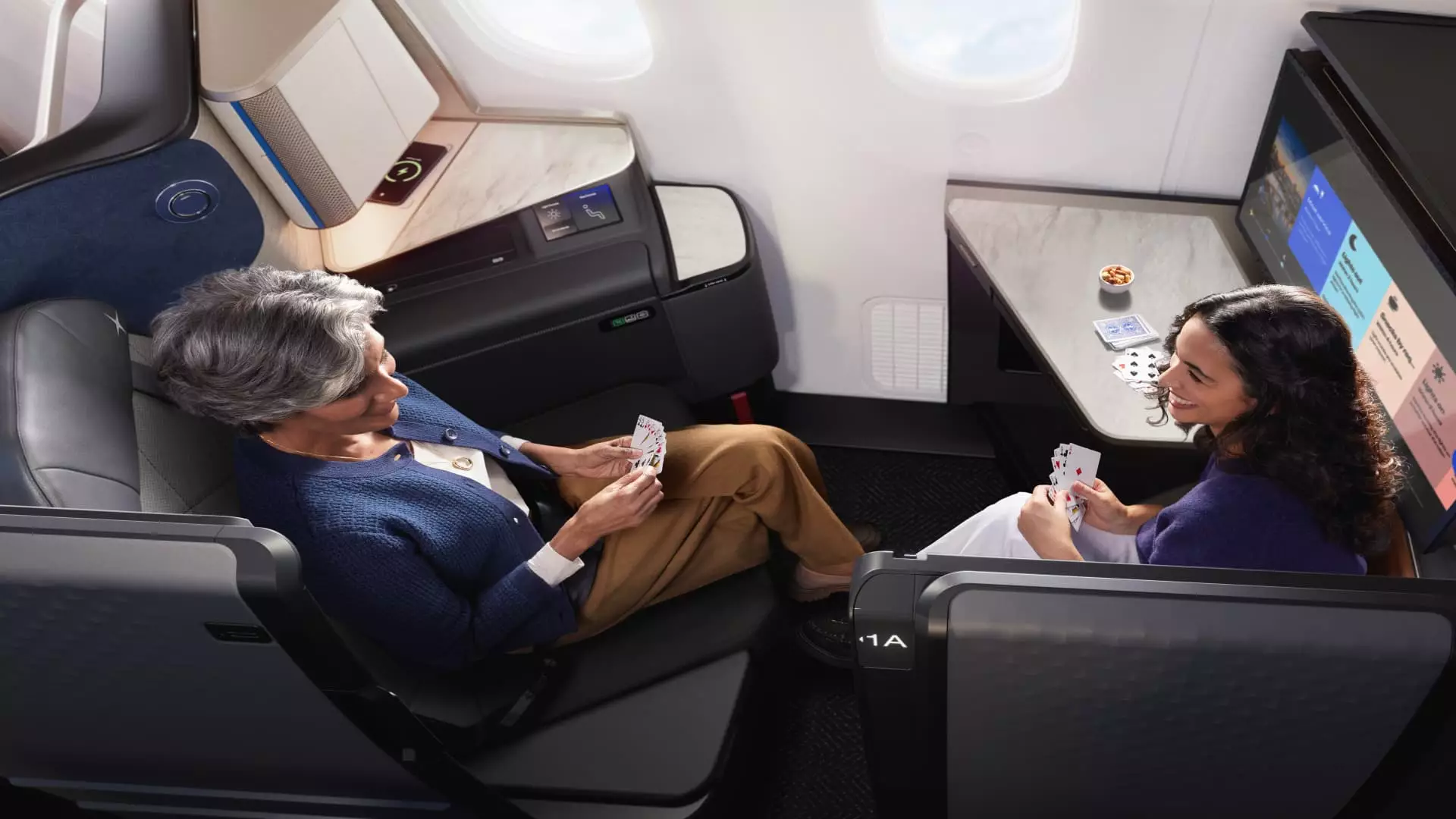Airlines have taken to an arms race in the skies, competing to elevate their international business-class offerings to new heights. What began as a basic service with comfortable seating has morphed into an extravagant display of decadence, complete with sliding doors, luxurious finishes, and gourmet dining. However, while lavish amenities draw headlines, a deeper, more cynical motivation lurks beneath the polished surface—the relentless pursuit of profits.
The Allure of Premium Travel: A Status Symbol or Genuine Necessity?
The battle between American Airlines and United Airlines epitomizes this new era of luxurious air travel. American is rolling out its upgraded business-class “suites” equipped with features like a trinket tray and wireless charging pad, which may seem ostentatious at first glance. The sliding doors and 42% more livable space make a compelling selling point. However, with a ticket price of $5,747 from Philadelphia to London, one must wonder—are these lavish accommodations truly about customer experience, or are they a glorified way to justify exorbitant prices to corporate clients?
When you delve into the numbers, it becomes evident that airlines are banking on the lucrative nature of premium ticket sales—especially as the general economy appears fragile, recession clouds loom, and some additionally bolster their margins amid high operational costs. Delta Air Lines has already tailored a successful model, showcasing suites with sliding doors in their Delta One cabin, underlining how quickly competitors must adapt to stay relevant.
Luxury Seams and Marketing Dreams: The Vanity of Airline Innovation
Contrary to the conventional wisdom that luxury drives demand, many economists assert it’s a byproduct of poor conditions in economy travel. “The experience in economy is so bad,” comments Robert Mann, an aviation consultant who reflects on the dissatisfaction plaguing coach passengers. At its core, this highlights an uncomfortable truth: whether born of necessity or choice, traveling in such lavish arrangements is partly a desperate response to the plight of those in cramped seats, who are subjected to fading comfort and enticements in modern travel.
Airlines are indulging in a feast of upgrades that may be exaggerated in their importance. With American Airlines and United Airlines loudly proclaiming the enhancements, from ottomans that allow for visitor seating to the promise of plush bedding, the narrative crafted resembles an elite club vying for superiority rather than the needs of the average traveler. The word “suite” has been diluted to the point where distinctions among business-class offerings become convoluted. A heightened level of sophistication is touted for the sole purpose of keeping corporate clients engaged, regardless of actual utility for the average traveler.
Prioritizing Profit over Passenger Comfort
Yet, examining the economic climate shows it’s a gamble for airlines. With increasing competition in the air travel space, particularly from international carriers such as Emirates, who boast entire shower suites and limitless caviar, there’s pressure on American and United to continually elevate their services. But there lies a schism—while aiming for premium service, their offerings lack the depth and creativity seen in truly high-end airlines.
Marketing campaigns may pride themselves on names like “Polaris Studio” or “Retreat Suite,” yet fundamentally, these terms mask an underlying truth: the demand for affordable comfort is high even when premium experiences are promoted. The complexities of managing these high-stakes battles mean that airlines have to carefully juggle amenities without losing touch with customer expectations, especially when faced with an unavoidable economic downturn.
The Dark Side of Luxury Travel Innovation
What is often overlooked in this race for premium status is how airlines sidestep addressing systemic issues within their operations. Improving seat comfort or catering to the elite fails to tackle the root problem that many airlines still grapple with—the reliability and basic dignity afforded to all passengers. Amid tales of stunning upgrades and upgrades flaunted in boardrooms, many forget that it’s passengers who often end up treated with disdain, enduring flight delays or lost luggage, regardless of where they sit in the aircraft.
While the allure of a plush seat and gourmet dining may draw in affluent travelers, the flawed infrastructure and growing distance from the typical traveler’s needs remain unquestioned. As competition for affluent consumers heats up, only time will reveal whether airlines can truly evolve from pitch decks to actual solutions that respect their clientele. Ultimately, chasing the ever-elusive throne of the luxury travel demographic entails a precarious balancing act—one that requires airlines to rethink their entire approach to service, not just the superficial garnishing of cushions and gourmet fare.

